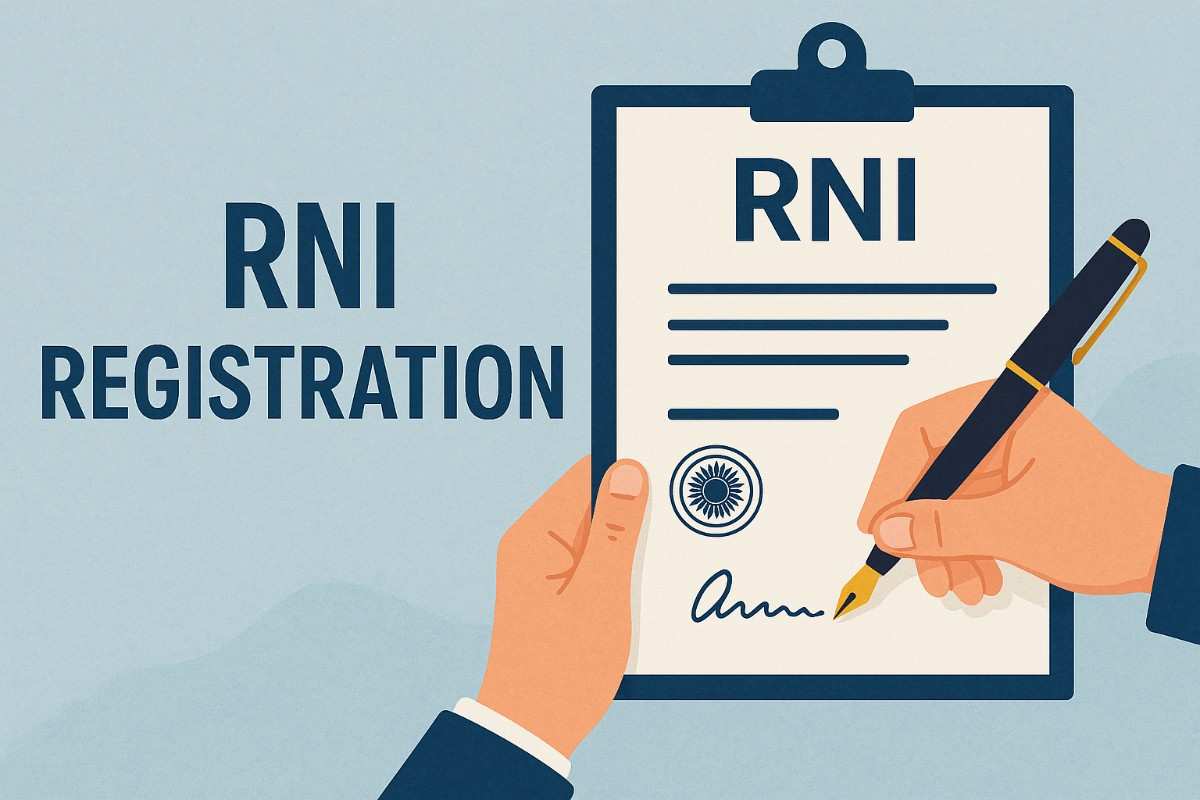Introduction: Why RNI Registration is More Relevant Than Ever
In an age of digital media dominance, you might think print is dying. But surprisingly, regional newspapers, niche magazines, and local journals are booming—especially in Tier 2 and Tier 3 cities of India. Whether you're launching a political weekly, a community newsletter, or a cultural magazine, the Registrar of Newspapers for India (RNI) is your starting point.
This article will help you understand RNI Registration not just as a compliance requirement, but as a strategic asset that builds legal identity, editorial credibility, and press rights for your publication.
What is RNI Registration?
RNI (Registrar of Newspapers for India) registration is a mandatory certification under the Press and Registration of Books Act, 1867 for anyone who wants to publish a newspaper, magazine, periodical, or journal in India. The RNI ensures:
- No two publications have the same name
- The publisher is verified and authorized
- The publication complies with media and printing laws
Unique Angle: RNI as a “Press Passport” for Local Voices
Think of RNI as your passport to the publishing world. It doesn’t just give you permission to print—it gives you:
- Credibility with advertisers and distributors
- Access to government press rates and tenders
- Protection of your title name
- Eligibility for government empanelment
In short, RNI registration turns your idea into a legally recognized publication, whether you’re a journalist, NGO, freelancer, or activist.
Who Needs RNI Registration?
- Individuals starting a print newspaper or magazine
- NGOs releasing a community newsletter
- Companies launching industry journals
- Educational institutions publishing research periodicals
- Political or social organizations launching weekly opinion papers
🧠 Note: RNI registration is only required for print publications. Online blogs or e-magazines don't need it.
Benefits of RNI Registration (Explained Simply)
- ✅ Legal Recognition – You officially become a publisher
- ✅ Exclusive Rights to Title – Your publication name is protected
- ✅ Advertising Support – Eligible for DAVP (Bureau of Outreach & Communication) ads
- ✅ Press Accreditation – Helps in getting journalist cards and access
- ✅ Bank Account & PAN in Publication’s Name – Operate like a legal business
- ✅ Distribution & Postal Discounts – Register for postal subsidies for mass circulation
Step-by-Step RNI Registration Process
Step 1: Title Verification (Mandatory First Step)
- Visit the official RNI website and fill the Title Verification Form.
- Submit 2–5 name options (in order of preference).
- Choose the publication language, periodicity (daily, weekly, etc.), and publishing state.
- RNI will check for name duplication and issue a Title Verification Letter.
📝 Tip: Always choose unique and regional/subject-based names for faster approval.
Step 2: Declaration Before Magistrate (Form I)
- Submit a declaration in Form I to your District Magistrate or Additional DM.
- This includes details of publisher, printer, language, periodicity, and printing press.
Step 3: First Publication Within 42 Days
- Print your first issue within 42 days of declaration (or 90 days for weeklies/monthlies).
- Ensure the first issue contains all required details:
- Title
- Volume & issue number
- Name of editor, printer, and publisher
- Printing press address
- Publication language and periodicity
Step 4: Submit Documents to RNI for Final Registration
Send the following:
- Application for RNI registration
- Copy of Title Verification Letter
- Copy of the declaration signed by DM
- First issue of the printed newspaper/magazine
- Printer’s certificate (in prescribed format)
- Affidavit of no foreign investment (if applicable)
Step 5: Get the RNI Certificate
- Once verified, RNI issues a Certificate of Registration, allowing you to legally continue and expand publishing.
Cost and Timeline
- Government Fees: NIL (RNI does not charge any registration fee)
- Time Taken: 30–60 days (depending on title availability and magistrate approval)
- Professional Help (optional): ₹5,000–₹15,000 via legal/consultancy firms
Common Mistakes to Avoid
- Submitting a name that is too generic (like "India Today Weekly")
- Not printing the first issue within the deadline
- Failing to match the language and title exactly between documents
- Using different addresses in different forms
- Forgetting to include volume number or editor’s name in the first copy
Documents Checklist
- ✔ Title Verification Letter
- ✔ Declaration in Form I
- ✔ First Printed Issue
- ✔ Printer’s Certificate
- ✔ Affidavit (no foreign investment if applicable)
- ✔ PAN/Aadhar of publisher and printer
RNI Registration vs. ISSN & ISBN – Know the Difference
- RNI: For newspapers, magazines, journals (print only)
- ISSN: For scientific and academic journals (print or online)
- ISBN: For books and ebooks
📌 If you're publishing a monthly magazine, you may need both RNI and ISSN.
Post-Registration Responsibilities
Once registered:
- Print and distribute your publication as per the declared frequency
- Submit an annual statement to RNI (for daily and weekly publications)
- Update RNI for any change in printer, editor, periodicity, or ownership
- Maintain publishing records for government audits or inquiries
Final Thoughts: Is RNI Registration Worth It?
Absolutely. Whether you're a solo journalist, a regional content creator, or a media startup, RNI registration:
- Protects your name
- Grants legitimacy
- Opens the door to government schemes and tenders
- Makes your dream publication official
In the crowded world of content, RNI gives you a unique voice in print — and the legal power to protect it.





Comments